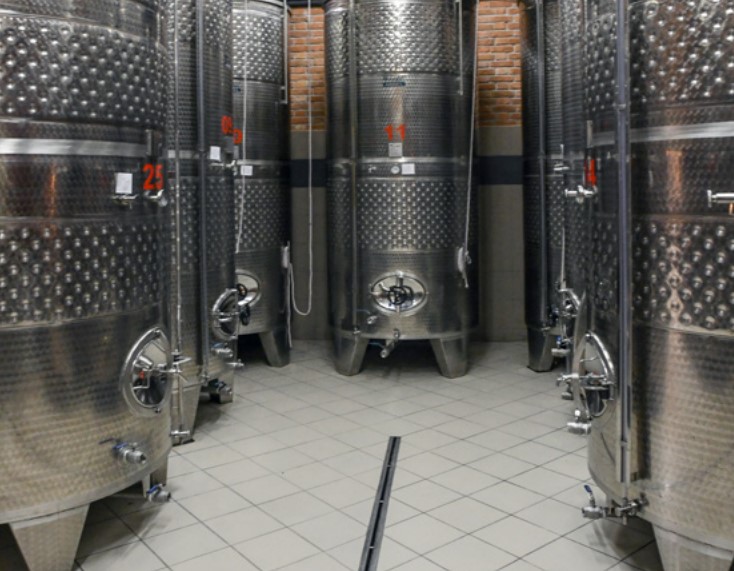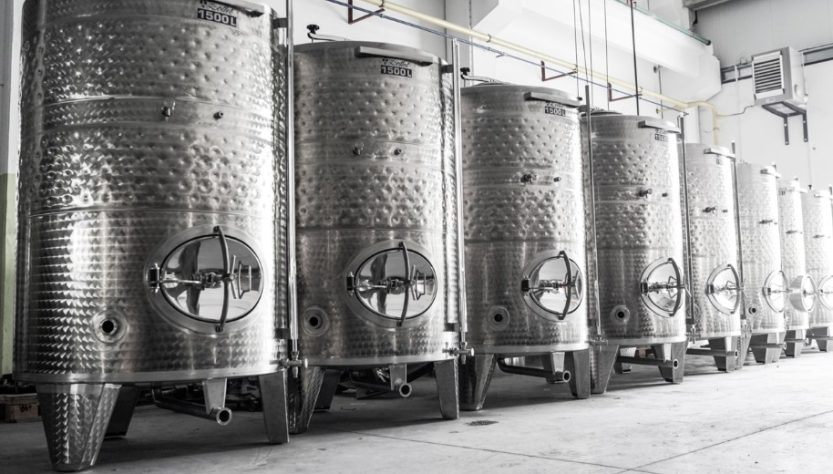With stainless steel, sometimes it’s more about what it doesn’t do to wine than what it does. As a neutral vessel, the stainless steel tank preserves the terroir and original fresh fruit character of the grapes. If the goal of a wine is to be sharp, bright, and crisp, as with many whites, inox wine tanks can easily achieve that effect. Whereas oak can help a red wine to soften, or a white wine by adding texture, steel maintains a more crisp and focused profile.
Table of Contents:
Preserving Aromas and Prolonging Aging
Stainless steel also doesn’t allow for the exchange of oxygen. This means that aging takes longer, and allows the wine to mature without diminishing the bright and fruity aromas. When a winemaker does seek to add more depth and richness to a vibrant, unoaked wine, one popular choice is to age the wine on lees (leftover yeast particles post-fermentation) while maturing in the tank.

Title: Choosing the Right Tank for Your Wine: A Comprehensive Guide
When deciding what type of tank to use when making wine, you’ll likely come across a few different palatable options. Each type of tank has its own unique benefits and drawbacks, so it’s important to do your research before you set out to buy just any type of tank. Your wine is its own unique blend, so the best way to honor your wine is to ensure that its vessel helps accentuate its flavors and is a productive member of the winemaking process.
Temperature Regulation and Sanitation Advantages
Stainless Steel Tanks, the most common of tanks, offer many benefits to the winemaking process. Not only is it fairly easy to regulate temperature in stainless steel tanks, but they are also known to be very easy to clean—and even perhaps, the easiest of all types—due to the smooth surfaces of the tanks. Sanitation is a large factor in the winemaking process, which makes this a very important factor.
Cost-Effective and Locally Produced
These types of tanks are also cost-effective, making them a significant factor in your fermentation vessel decision. Stainless steel tanks are generally produced locally, saving you from extensive searches and high shipping fees. Not only are they economical, but they are also known to be a solid investment due to stainless steel’s lasting value and the ease of resale.
Highlighting Fruit Profiles without Additional Influences
In terms of tannin and flavor effects, this type of tank could be right for you if you don’t want to add any tannins or flavors to your already desirable wine. Stainless steel allows you to focus and highlight the specific profiles of your fruit, ensuring that the effects on the wine are due to your winemaking decisions and not the fermentation mechanism.
Variability in Shape, Taper, Valve, and Door Placement
Lastly, the shape, taper, valve, and door placement can vary by tank—essentially allowing you to produce a custom tank for your winemaking or fermentation goals. Since you will have this tank for a very long time, be sure to confirm that the ves
Posts from the same category:
- Top Qualities to Look for in an External Door
- Purchasing Real Estate in Italy
- Special Requirements and Steps for Buying Slovenian Real Estate for Foreigners
- Simple Steps to Find Apartments for Rent Slovenia
- Comprehensive Guide to Popular Types of Grass Fertilisers
- Why an Artificial Christmas Pine Tree is a Better Option
- Types of Pallet Truck









